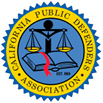Just about everyone knows that it is illegal and very dangerous to drive under the influence of alcohol. What is not as widely known or understood is that it is just as illegal to drive a motor vehicle under the influence of drugs. In fact, the very same California Penal Code section, section 23152, prohibits both driving under the influence of alcohol (commonly known as "DUI") and driving under the influence of drugs ("DUID.")
The Penal Code does not specify which drugs it prohibits you to be under the influence of while driving, and it specifically uses the term "drug" rather than the more specific term "controlled substance." This may cause you to wonder if you can be prosecuted for driving after taking something like aspirin. After all, aspirin is what is commonly referred to as an "NSAID" which is an acronym of "Non-Steroidal Anti-inflammatory Drug." The simple answer is no, you cannot be prosecuted for DUID if you drive after taking some aspirin. However, there are some similar drugs like Tylenol with Codeine that do qualify because of the presence of Codeine.
While the Penal Code uses the term "drug," in practice, the law only applies to controlled substances. More specifically, it only applies to those substances which have the ability, in one way or another, to impair your ability to drive.
The federal Drug Enforcement Agency ("DEA") produces a list of controlled substances, separated into five schedules, or groups. Schedule I drugs include those most commonly associated with drug use such as heroin, marijuana and LSD. Schedule II includes primarily prescription drugs that have a tendency to lead to severe dependency or addiction such as OxyContin and Vicodin. Schedule III drugs are those that have a more moderate potential for dependency or addiction, such as Tylenol with Codeine or anabolic steroids. Schedules IV and V drugs are those with a low (but possible) potential for addiction or dependency like Xanax, Valium and Versed.
You can find a list of all the federally-controlled substances, and other useful information by going to the DEA website or by clicking HERE.
If you have taken any drug that has the potential to impair your ability to drive, (including prescription drugs) and you are pulled over by a police officer; you can be prosecuted for DUID, and be subjected to many of the same penalties that a person prosecuted for alcohol DUI faces.
What is the Difference Between Alcohol DUI and DUID:
Like any DUI case, the burden of proof is on the prosecution. However, a DUID case is harder for the prosecution to prove than driving under the influence of alcohol. The D.A. must prove that the ingestion of drugs so affected your abilities that you were not able to drive like a normally cautious driver. Since the prosecution will rarely do a quantitative test to determine what level of drugs are in your body, it is difficult for them to prove that you were actually under the influence. Evidence that the D.A. will make an effort to use against you is your driving, your performance on the field sobriety tests, and the test as to whether there is any level of drugs in your body. Sometimes, the police officer will be trained as a Drug Recognition Expert. This training includes classes on recognizing behaviors caused by different drugs, analysis of effects on the eyes, and knowledge of effects on speech and coordination. Such training will give more believability to the opinion of the officer.
Also, unlike a charge of driving under the influence of alcohol, the D.M.V. will not automatically suspend your license for drugged driving. Instead, your license will only be suspended if you are convicted of driving under the influence of drugs.
The other significant difference between an alcohol DUI and a DUID is that there is no established standard for acceptable levels of various drugs similar to the 0.08% blood alcohol level limit. With regard to alcohol, if you are driving and your blood alcohol level is 0.08% or higher, you can be convicted of DUI even if you show no signs of impaired driving. In those cases, you are considered to be impaired as a matter of law. In this regard, DUID is somewhat different in that there is no level of any particular drug where you are considered impaired as a matter of law (in fact, there is no way to test the level of many if not most drugs in your body.) The only way you can be convicted of DUID is if the prosecution can show that your driving was actually impaired. In other words, you can only be convicted of DUID if the prosecution demonstrates that you were so impaired by the drug that you could not drive with the caution of a normally sober person.
Examples of DUID:
- Molly was driving to work on Monday morning. A few days prior, she had injured her back after a trip and fall accident in her garage. To manage the pain in her back, her doctor prescribed her Percocet, a Schedule II controlled substance and part of a class of opiod pain killers. Molly had been taking them regularly for the last few days since her accident, but had not left home during that time. After she got on the road, she realized that the Percocet she had taken was causing her to have difficulty driving. Rather than pulling over and calling a friend for help, she decided to just keep going because she did not want to be late for work. A patrol officer on the road behind her saw that she was driving erratically and pulled her over. When the officer asked if she had been drinking, she said no. The officer then asked her if she had been taking any drugs. Molly told the officer that she was only taking the pills her doctor prescribed for her, and when the officer asked what those pills were, she answered truthfully. Molly was then arrested for DUID based on her erratic driving and her admission that she was under the influence of Percocet.
- Morty likes to smoke marijuana, and does so regularly. Since the simple possession of marijuana is now legal in California, he keeps a small amount in his car, though he does not smoke while in the car. Morty is involved in a minor traffic accident, and pulls over to the side of the road. When a police officer arrives to take an accident report, he approaches Morty, who is waiting in his car. The officer smells the marijuana in the car, and asks if Morty had been smoking it recently. Morty replies that he smokes regularly, but does not indicate the last time that he smoked. The officer then asks Morty to take a field sobriety test, and asks if he will submit to a drug test. Morty agrees to both. He takes and passes the field sobriety test without issue, and the police officer leaves after getting what he needs for the accident report. Later, when Morty takes the drug test, it shows that there is evidence of recent marijuana use. The results of the test and the report of the police officer are forwarded to a prosecutor to decide whether or not to prosecute for DUID. The prosecutor declines to prosecute Morty due to the lack of evidence that Morty's driving was impaired and the fact that the drug test could not show that marijuana was influencing Morty's ability to drive his car at the time of the accident. In fact, Morty had been smoking marijuana only minutes before the accident, but there was insufficient evidence to prove that fact, and Morty did not admit to it.
- Rick is a recovering alcoholic. He has been sober for several months, but due to the change in his lifestyle, he as been suffering from anxiety. To deal with this, his doctor prescribed him Xanax, which Rick takes regularly. The Xanax does not affect his ability to drive, and so he does not limit his driving in any way. One day, Rick falls off the wagon, and goes to his regular bar to get drunk. However, after having one drink, he decides he does not want to ruin all the progress he has made over the last few months, and stops drinking. Rather than leave immediately, Rick takes a Xanax, and sits in the bar while talking on the phone to his sponsor, and to make sure that he is under the legal alcohol limit. When Rick begins to drive home, he realizes that he is having trouble keeping his focus on the road, and is swerving slightly between lanes. A police officer sees this and pulls him over. Rick admits to the officer that he had one drink about an hour prior, and is administered a field sobriety and breathalyzer test, both of which Rick passes. The officer is about to let him go when Rick takes his bottle of Xanax out of his pocket and ingests one, which the officer sees. When the officer questions Rick about the pill he just took, Rick is honest and forthcoming, telling the officer that he takes Xanax for anxiety, and being pulled over makes him anxious. Rick is then arrested for DUID doe to the combination of recent alcohol consumption and use of a drug impairing his ability to drive.
What Should You Do if You Are Pulled Over:
Stay calm, do not submit to the field sobriety tests (this is not required), submit to a blood or breath test if requested, give as little information as possible without being defiant, and call an attorney when it is over. There is no point in refusing the blood or breath test because the refusal will be used against you in court. Also, if you are arrested, you must submit to a breath or blood test when offered one by the police or risk a loss of your license.
How Does a Prosecutor Prove DUID:
For a defendant to be proven guilty of DUID, a prosecutor must prove the following:
- The defendant was engaged in driving a motor vehicle; and
- The defendant was under the influence of one or more controlled substances
Penalties For DUID:
A first DUID is, absent extenuating circumstances, a misdemeanor. The penalties a defendant will generally face are:
- Jail time between 2 and 6 days; and/or
- A fine of up to $1,000; and
- A 10 month driver's license suspension; and
- Successful completing of a DUI program.
If a defendant has one or more prior DUI or DUID convictions, or the DUID for which they are convicted involves circumstances such as the destruction of property or injury to another person; the defendant will likely face additional or more severe penalties. Depending on the circumstances, the DUID conviction could be treated as a felony rather than a misdemeanor.
Actual Case:
Late at night, Bill was weaving and driving his vehicle below the speed limit on a downtown street. He was stopped by the police and when contacted, the police noticed an odor of alcohol. Bill was given some field sobriety tests and did poorly on the balance and coordination tests. Bill was given a preliminary alcohol screening test and his alcohol levels were an .05, well below the legal limit. The police still believed that Bill was under the influence and they asked him if he had ingested any drugs. Bill suffered from anxiety disorder and had taken several Xanax pills that day. Still, the police arrested Bill for a violation of Vehicle Code Section 23152(f), driving under the combined influence of alcohol and drugs. After Bill hired me, I was able to demonstrate to the D.A. that Bill’s use of Xanax was prescribed and that Bill had not been aware of the effect that the drugs and alcohol would have when combined. As a result, I was able to obtain a much reduced charge for Bill, that of reckless driving.
How We can Help:
David Foos has over 40 years’ experience defending DUID cases. As such David knows all the defenses and ways that you can beat the charges. Also, David was the Judicial Officer for 2 years who heard all the driving under the influence cases in Sacramento County. As a result, David gained wide knowledge of the law regarding DUI cases. Because of his experience David has formed relationships which will benefit you in the defense of your case. Call our Sacramento Criminal Attorney David at 916-779-3500 for a free consultation, or contact him on the web at Contact@foosgavinlaw.com.















